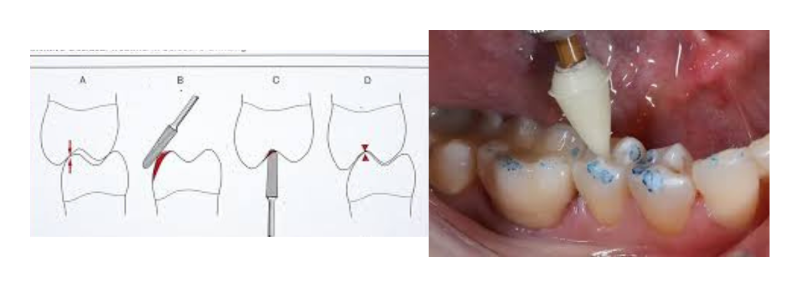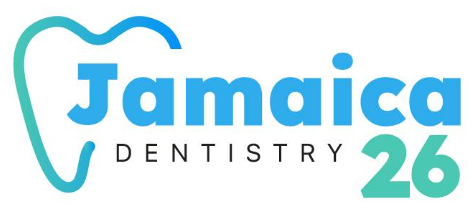Occlusal Adjustment

A well-balanced bite is crucial for teeth, gums, and jaw joint protection. Distribution of chewing forces avoids problems like tooth wear, cracking of teeth, sensitivity and jaw pain. Small bite irregularities may cause pressure on some teeth, which may later result in long-term complications without correction.
Professional dental care always ensures that your bite works properly, promotes the longevity of restorations, and enhances the overall comfort of your mouth. At Jamaica 26 Dentistry, these adjustments are offered at affordable prices.
What is Occlusal Adjustment?
Occlusal adjustment is a therapy used in dentistry to reconfigure the biting surface of the teeth to ensure proper alignment and equilibrium. It helps in the equalization of chewing forces, minimizes jaw stress, prevents tooth wear, and protects your oral restorations.
Treatment commonly refers to patients who are affected by bite misalignment, discomfort, or bruxism. When done accurately, it enhances the comfort and performance of the mouth. Visit Jamaica 26 Dentistry and get effective bite adjustments at competitive prices by our top professionals.
Goals and Rationale of Occlusal Adjustment
A balanced chew preserves your teeth, gums, and jaw joints. Occlusal adjustment makes your teeth fit better when you bite down. It prevents pain, inflammation, and chronic dental issues. This treatment focuses on comfort, functionality and preservation of your smile. The aims of this therapy are below:
- It distributes the chewing forces uniformly on all the teeth
- It minimizes or eliminates strain on the jaw and can prevent temporomandibular joint (TMJ) issues
- It reduces the chances of headaches, tooth wear, and fractures
- It makes sure that crowns, bridges, and other restorations are fitted and function properly
Sign and Symptoms
The following are major signs and symptoms that someone needs occlusal adjustment therapy:
- Bite does not feel right
- Early tooth contractions during chewing
- Uneven bite (malocclusion)
- Teeth grinding or clenching (bruxism)
- Sensitive teeth without decay
- Mobile or loose teeth
- Irregular wear of the teeth
- Chipped or broken teeth
- Bridges or fillings that result in an uneven bite after crowns
Controversy and Caution
Occlusal adjustment is invasive and non reversible. Since dentists only remove minute layers of the enamel, it should be planned carefully. Excessive grinding is more harmful than beneficial.
Its use in the management of temporomandibular joint (TMJ) disorders is controversial. Some studies indicate minimal or no evidence of benefits as compared to placebo treatments. It is essential to diagnose properly and define treatment objectives prior to procedure.
Step-by-Step Process
In this section, you will read the steps of clinical procedures involved in occlusal adjustment and followed by a dentist. Clear checks are used at each step. Each step restricts the removal of enamel and emphasizes functionality.
Diagnosis & Analysis
The steps involved in the diagnosis and analysis of occlusal adjustments are given below:
- Dentists take complete dental and medical history
- The doctor inquires about headaches, wear, and pain in the jaw
- Dentists examine teeth to look for wear, fractures, and loosen teeth
- The dentist examines jaw movements and temporomandibular joints (TMJ)
- Dentists apply articulating paper to define high contacts
- Dentists perform contact testing with shimstock foil when required
- Dentists can use a digital occlusal analyzer for force mapping
- Dentists recommend imaging when the exam indicates structural problem
- The dentist measures bite relationships in complex cases
Treatment Planning
The following are steps involved in treatment planning:
- Dentists draw specific treatment objectives
- Dentists create an impression of the precise teeth and surfaces that are to be adjusted
- The dentist discusses the treatment scheme and risks with the patient
- Informed consent is obtained by the dentist
- Dentists will either adjust enamel, modify restorations, or employ a dental appliance
Selective Grinding / Reshaping
- Dentists make the area dry and then isolate
- Dentists eliminate little enamel over small controlled steps
- Dentists regularly examine the bite using articulating paper
- Dentists grind the reduced surfaces to a smooth finish
- The dentist stops when the bite feels equalized within movements
- Dentists maintain the structure of teeth and prevent excessive reduction
Final Check-Ups and Follow-Ups
- A dentist re-examines erosive and centric joints
- To ensure comfort, the dentist might ask the patient to bite and exercise the jaw
- Dentists pay attention to sensitivities and chewing
- The dentists set appointments to adjust the bite
- Dentists prescribe a night guard to treat patients with bruxism
- In case of persistence and aggravation of symptoms, a dentist refers to a specialist
Implications & Long-Term Outlook
Good occlusal maintenance promotes oral health and performance. Dentists make plans for small treatments such as minor surgeries. Compare the benefits and removal of permanent enamel.
Benefits
The benefits of this therapy are given given below:
- It distributes the chewing forces
- Helps minimizes wearing down and cracking of teeth
- It reduces pain in the jaw and muscles
- It enhances chewing efficiency
- It makes restorations more long-lasting
Risks and Cautions
The risks associated with these adjustments are given below:
- It can demineralize enamel on a permanent basis
- This might not help in relieving TMJ pain
- When wrongly diagnosed, it can worsen issues
Monitoring and Maintenance
- Dentists monitor the results over time
- Patients maintain regular dentist visits
- If required, further adjustments are made by dentists
- The patient appropriately wears protective appliances
- Dentists provide combined care with orthodontics or restorations when needed
Choose an experienced occlusion dentist. Take time to plan and engage the patient in the process.
FAQs
Is occlusal adjustment painful?
No, occlusal adjustment is not a painful experience. A small portion of the tooth enamel that contains no nerves is reshaped by the dentist. There is no discomfort, and you can feel the vibration of the dental handpiece. Local anesthesia is not generally required. There are patients who might feel little sensitivity temporarily after the procedure but this tends to disappear within a few days.
How do I know if I need an occlusal adjustment?
Occlusal adjustment may be engaged when one feels uneven bite, pain in the jaw, loss of teeth, and repetitive chipping. Other signs, such as headaches, tenderness of the teeth, and discomfort with mastication, may also appear. A dentist will verify the necessity by examining your bite through articulating paper, digital bite analysis or other diagnostic equipment.
Can occlusal adjustment help with teeth grinding (bruxism)?
Yes, sometimes, grinding due to an uneven bite can be minimized by using an occlusal adjustment. It balances your teeth bite which limits overcrowding specific teeth. But in case you are grinding because of stress or other reasons, your dentist might also prescribe a night guard or a stress management method along with the adjustment.
How long does an occlusal adjustment take?
The process is typically fast. Complex modifications will take 20-30 minutes. Cases involving single or more than two teeth and extensive bite differences are more complex and may take longer or several visits. To ensure the comfort, follow-up appointments may be required to perfect the bite.
Are the results of occlusal adjustment permanent?
The answer is yes because there is no regrowth of enamel that has been reshaped in the process of occlusal adjustment, and the changes are permanent. But your bite may vary over time with wear of the teeth, loosen teeth or new dental work. This is why you need to visit your dentist regularly to make sure that your bite is balanced and comfortable.
